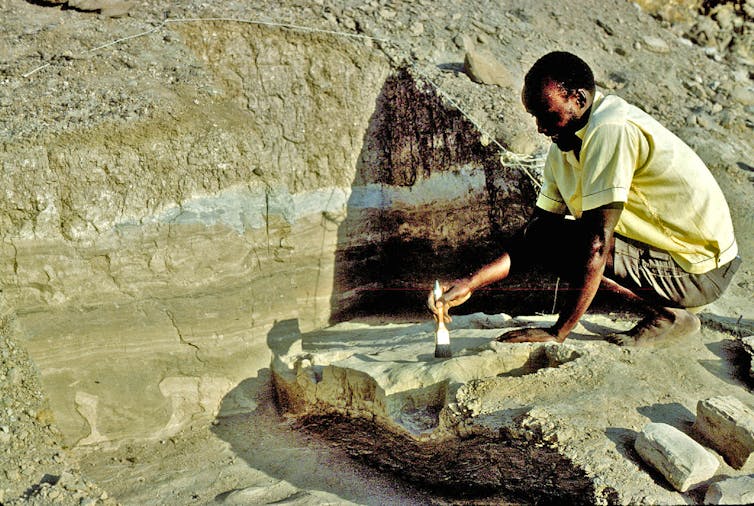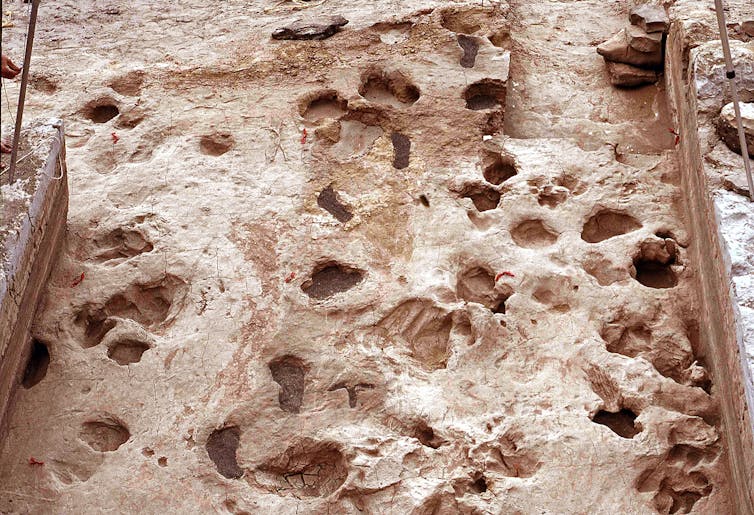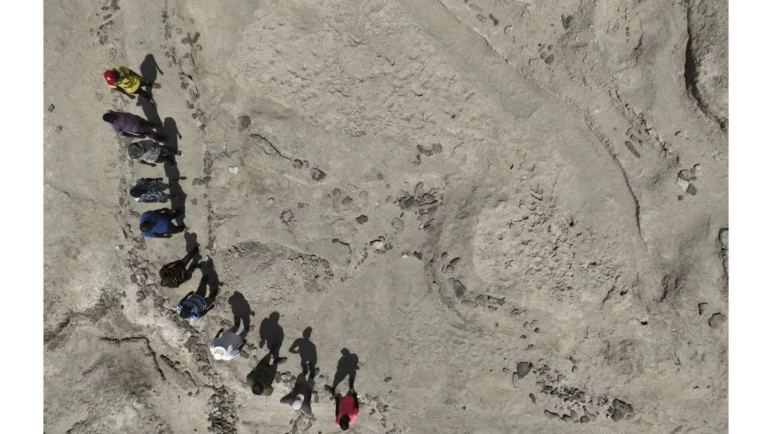Human footprints stir the imagination. They invite you to follow, to guess what someone was doing and where they were going. Fossilized footprints preserved in rock do the same – they record instants in the lives of many different extinct organisms, back to the earliest creatures that walked on four feet, 380 million years ago.
Discoveries in eastern Africa of tracks made by hominins – our ancient relatives – are telling paleontologists like ourselves about the behavior of hominin species that walked on two feet and resembled us but were not yet human like we are today. Our new research focuses on footprints that amazingly record two different species of hominins walking along the same Kenyan lakeshore at the same time, roughly 1.5 million years ago.
Studying ancient tracks like these fills in exciting pieces of the human evolution story because they provide evidence for hominin behavior and locomotion that scientists cannot learn from fossilized bones.
Finding first fossilized footprints in Kenya
The first discovery of tracks of early hominins in Kenya’s Lake Turkana region happened by chance in 1978. A team led by one of us (Behrensmeyer) and paleoecologist Léo Laporte was exploring the geology and fossils of the rich paleontological record of East Turkana. We focused on documenting the animals and environments represented in one “time slice” of widespread sediments deposited about 1.5 million years ago.

Kimolo Mulwa at the site of the first hominin footprint discovery in 1978. Deep, sand-filled depressions to his left show hippopotamus tracks in cross section.
Anna K. Behrensmeyer
We collected fossils from the surface and dug geological step trenches to document the sediment layers that preserved the fossils. The back wall of one of the trenches showed deep depressions in a layer of solidified mud that we thought might be hippo tracks. We were curious about what they looked like from the top down – what scientists call the “plan view” – so we decided to expose 1 square meter of the footprint surface next to the trench.
When I returned from more fossil bone surveys, Kimolo Mulwa, one of the expert Kenyan field assistants on the project, had carefully excavated the top of the mudstone layer and there was a broad smile on his face. He said, “Mutu!” – meaning “person” – and pointed to a shallow humanlike print in among the deep hippo tracks.

The excavated surface shows the hominin trackway along with footprints of hippos, a large bird and other animals. For the photo, scientists filled the hominin tracks and a few other footprints with dark sand so they would stand out against the light-colored sediment.
Anna K. Behrensmeyer
I could hardly believe it, but, yes, a humanlike footprint was clearly recognizable on the excavated surface. And there were more hominin tracks, coming our way out of the strata. It was awe-inspiring…



